Welcome to the May 2023 edition of QC Research Highlights!

This month, we’re featuring the following works by faculty authors, on many different subjects! Thanks for reading, and as always, thanks to the authors who have contributed their works.
All the works featured in this series are available to read and download for free from CUNY Academic Works.
Dan Lee (Mathematics) researches geometrical analysis and is particularly interested in mass in general relativity. He and coauthor Lan-Hsuan Huang (University of Connecticut) have an article, “Trapped Surfaces, Topology of Black Holes, and the Positive Mass Theorem,” in which they build on Roger Penrose’s work analyzing black holes with geometrical and topological approaches. One of the things that’s interesting about Huang and Lee’s article is that it shows how mathematics and physics work together. This article deals with trapped surfaces (regions from which light cannot escape; that is, they are inside black holes), but focuses more specifically on marginally outer trapped surfaces (MOTS), which lie at the intersection of the trapped region and its horizon. The article lays out the theorems that have been used to understand the topology of black holes, including Hawking’s theorem that under certain conditions, a MOTS must be a topological sphere, and the positive mass theorem, which has several implications, including that the sources for Einstein’s equations should not behave as if they were traveling faster than light. The authors have shown that this works differently at higher spatial dimensions.
Jeffrey Halperin (Psychology) specializes in the treatment of children with ADHD. He is one of the authors of the article “Distinct Thalamic and Frontal Neuroanatomical Substrates in Children with Familial vs. Non-Familial Attention-Deficit/Hyperactivity Disorder (ADHD),” along with four coauthors: Rahman Baboli and Meng Cao (both from New Jersey Institute of Technology and Rutgers University) and Xiaobo Li (New Jersey Institute of Technology). This article is about the relationship between ADHD and the physical structures of the brain; specifically, it examines the differences between children with ADHD whose parents have also been diagnosed with it (familial), and other children with ADHD (nonfamilial). The researchers recruited a large group of participants and use MRI imaging to study their brains. Compared to the neurotypical subjects, the subjects with ADHD (both familial and non-familial) tended to have a smaller cuneus – a region of the brain associated with processing visual information. Between the two groups that had ADHD, the familial group tended to have a larger thalamus than the non-familial group. This is a part of the brain involved in the circuit of brain areas that manage attention and cognitive processing. With this and a few other differences, the study suggests that familial ADHD may be more severe than non-familial.
For this first time, this column would also like to feature a work that wasn’t written in English! That is, “Mas yo resto: Entrevista con Nancy Morejón,” an interview conducted by Vanessa Pérez-Rosario (English), whose specialty is nineteenth through twenty-first century US Latinx and Caribbean literature and culture. She is also the editor of the journal Small Axe. This interview, conducted in Spanish, is with Nancy Morejón, a well-known Cuban poet, essayist, and critic. In this interview, they discuss Morejón’s life and writings. She began publishing poetry at the age of seventeen, and when El Puente, a group that published new writers, published her work along with that of several other writers of note. She studied French at the University of Havana and wrote her thesis about Aimé Césaire, whom she ended up meeting many years later. Morejón’s work was influenced by Césaire, Nicolás Guillén, and many others. The interview goes on to discuss Morejón’s work and philosophy, including the importance of multilingualism.
Finally, Kevin Birth (Anthropology), who studies the relationship between time and culture, has an article on the pedagogy he uses to help students think of time as culturally contingent: “Teaching Time; Disrupting Common Sense.” His course considers the difference between conventional expressions of time (calendars, clocks, and so on) and the experience of time. He asks students to think creatively about concepts and representations of time. He uses several fascinating strategies to encourage students to think more critically about time and highlight how time is constructed in a cultural context. His assignments use creative due dates based on obscure historical calendars, leap days, natural astronomical cycles, and the lives of plants, as well as relative time measures (“two weeks from now”). Among other things, he asks students to consider the clock both as a cultural artifact and a machine that can be manipulated, and demonstrates the differences between the length of the hour at different historical times with the “world’s worst drum solo.” The class considers capitalist metaphors for time, scientific paradoxes involving time, and more. In any case, as we draw toward the end of the semester, it may be useful to remember that all our measures of time are arbitrary and culturally contingent.
This is one of a series of blog posts featuring faculty publications in CUNY Academic Works. Academic Works is a service of the CUNY Libraries dedicated to collecting and providing access to the research, scholarship, and creative and pedagogical work of the City University of New York. In service to CUNY’s mission as a public university, content in Academic Works is freely available to all.
If you would like to share your research in Academic Works, please see this guide to Academic Works, or contact Nancy.Foasberg@qc.cuny.edu.
Share Post:
